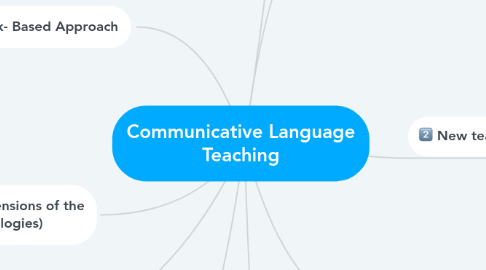
1. Sequences take students from Mechanical to meaningful to communicative practice
2. Is not important if classroom materials are derived from authentic texts, as long as the learning process is authentic.
3. Two Methodologies as extensions of the CLT (process - based methodologies)
3.1. Content - based Instruction
3.1.1. Teaching of content in the language being learned with explicit effort to teaching the language itself separately from the content being taught.
3.2. Task - based instruction
3.2.1. Pedagogical tasks
3.2.2. Real- world tasks
4. Task- Based Approach
4.1. Text- based Syllabus
4.1.1. Is a type of mixed syllabus, one that integrates reading, writing and oral communication and other which teaches grammar through the mastery of texts.
4.2. Issues
4.2.1. problem of language accuracy
4.2.2. addresses classroom processes rather than learning outcomes.
5. Competency- Based Instruction Competency- Based Language Teaching (CBLT)
5.1. It doesn't matter what methodology is employed as long as it delivers the learning outcomes
5.2. Focuses on learners with very specific language needs.
6. Communicative Competence
6.1. Is viewed as mastery of functions needed for communication across a wide range of situations.
6.2. Aspects of language knowledge:
6.2.1. How to use language for a range of different purposes and functions.
6.2.2. How to vary the use of language according to the setting and the participants.
6.2.3. How to produce and understand different types of texts.
6.2.4. How to maintain communication despite having limitations in one's language knowledge
7. New teacher and student roles
7.1. Learners participate in a cooperative way rather than individualistic approach to learning.
7.2. Teachers now had to assume the role of a facilitator and monitor.
7.2.1. This focuses on the four skills of reading, writing, listening and speaking and breaks into its component microskills.
8. Syllabus types proposed by advocates of CLT.
8.1. A skills- based syllabus
8.2. A functional syllabus
8.2.1. Organized according to the functions the learner should be able to carry out in English (likes/dislikes, apologies.. etc).

